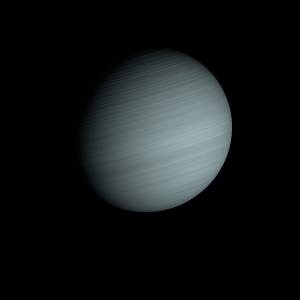|
|
Space Astro
|
Info for exoplanet "Xwan"
| Scientific (actual) data |
|---|
| Planet | WASP-137 b |
| Planet status | Confirmed |
| Planet mass | 0.681 |
| Radius | 1.27 |
| Orbital period | 3.90803 |
| Semi major axis | 0.0519 |
| Orbit eccentricity | 0.14 |
| Inclination | 84.59 |
| Discovered | 2018 |
| Updated | 2018-12-26 |
| Tzero tr | 2456940 |
| Impact parameter | 0.69 |
| K | 76.7 |
| Temperature (kelvin) | 1601 |
| Publication | Published in a refereed paper |
| Detection type | Primary Transit |
| Mass detection type | Radial Velocity |
| Radius detection type | Primary Transit |
| Star name | WASP-137 |
| Right ascension | 25.87° |
| Declination | -14.15° |
| Mag v | 11 |
| Star distance | 289 |
| Star metallicity | 0.487 |
| Star mass | 1.216 |
| Star radius | 1.65 |
| Star sp type | G0 |
| Star age | 4.3 |
| Star temperature | 6100 |
| Wikipedia article | WASP-137 b |
Back
| |
| Fictional info (?) |
|---|
| Suggested name | Xwan |
| Planet type | Hot gas giant |
| This planet is named after the deity Xwan, the spirit of the sea.
It was the one of the first exoplanets visited by a spacecraft, and one of the first to be successfully landed on.
The two polar ice caps appear to be made largely of frozen gas.
Wind speeds can reach 86 metres per second.
The largest moon is said to have dangerous earth-like carnivores known to survive by killing anything they find at night. The Gyou Zhwan are related to Mwah but with wings and vary in size from 70 to 90 mm. Gyou Zhwan are known to survive temperatures from -10 to 40°C and even severe infection which is common near the poles. |
| Estimated population | 90 |
| Atmosphere | Methane | 89% |
| Water | 5.2% |
| Oxygen | 3.1% |
| Carbon dioxide | 1.9% |
| Atmospheric pressure | 40 bar |
 |
| Moon | Yyaokwa Shaop | Very small round rocky planetoid |
| Google search for Xwan |
|
Website by Joachim Michaelis
|
|
|
|